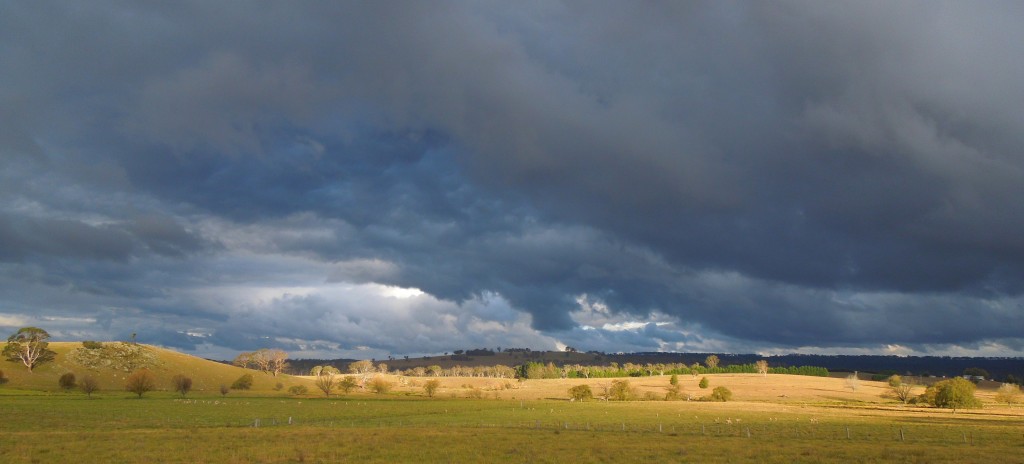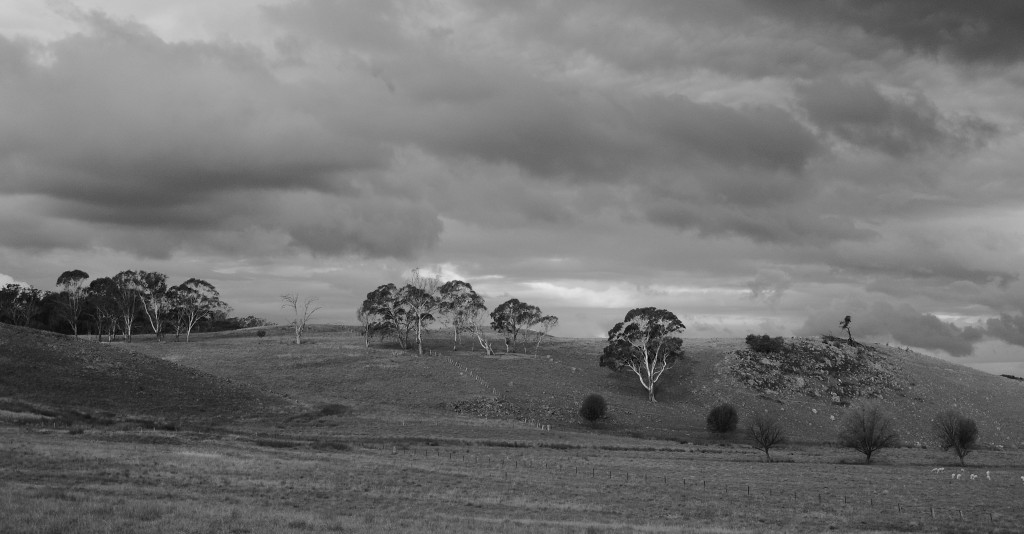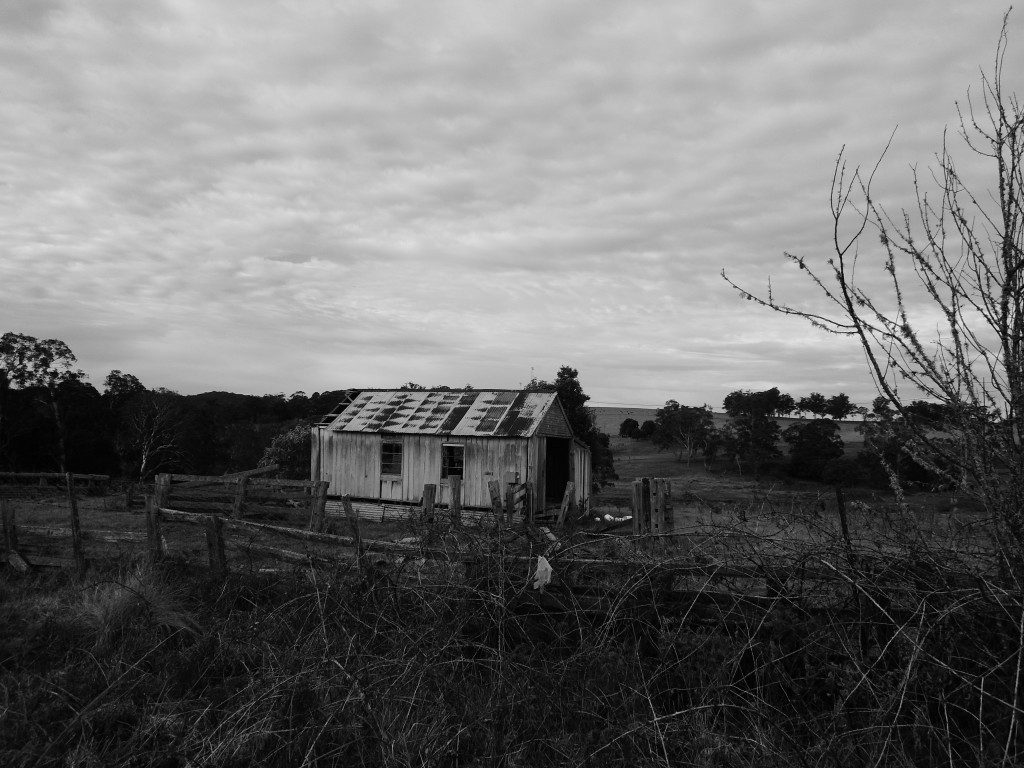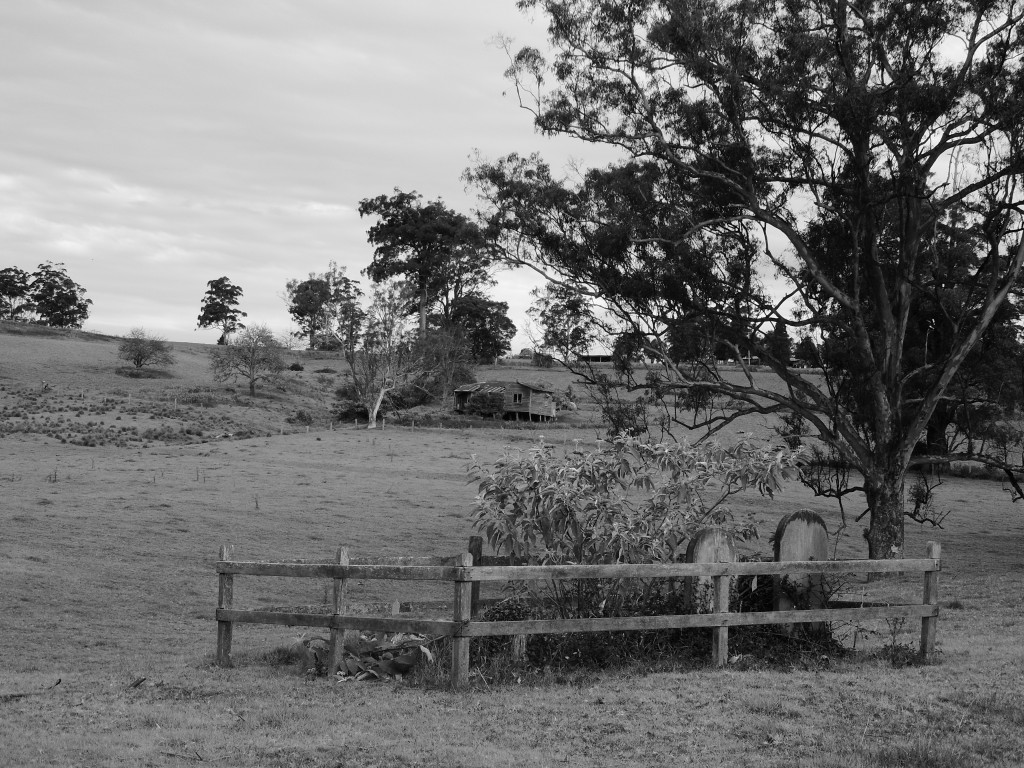I recently spent a few days up on and around the New England plateau in northern New South Wales. It is a region so-named when the first squatters moved in back in the 1830s because of its climate rather than any physical resemblance to an English landscape. The association has stuck and been amplified by architecture – the two central grand churches are Gothic and Norman and the area’s largest house Booloominbah (1888) is a tour-de-force of architectural Anglophilia, right down to the celebration of the life and death of General Gordon, the hero of Khartoum, in a stained glass window. The old and more recent deciduous plantings in town and around outlying properties have added a natural association to Old England. The autumn colours were breathtakingly beautiful.
These reds and golds contrasted with the surrounding pastoral landscape and remnant forest which was a subdued grey green. And because New England is granite country the boulders which often lie strewn around the pastures emphasize that muted palette.
I was struck by the effect that landscape had on me. The expanse of ground and concurrent vastness of the sky – filled with clouds that were punctured by occasional sun – was obviously dramatic. But there was a melancholy about the scenes which I had felt before but never quite so strongly. Aesthetic, rather than depressive melancholy, is prompted by contemplation. Its certainly not joyous but neither is it debilitating and corrosive. Indeed it can be seductive. The philosopher SØren Kierkegaard wrote of it as a ‘love’ – a mistress to which he kept returning. For my part I couldn’t help stopping to look and photograph what I saw in an attempt to capture the quality.
There must be some psychological basis for the connection between the emotion and aesthetic – hence the term ‘sombre’ colour I suppose.
But there is so much that is cultural – right down to the feeling of loneliness that an empty landscape can evoke. For me the cultural is always historical. Swirling around in my head when I looked around were imagined narratives of those who colonised the place – both squatter and shepherd – and those who were dispossessed. Beauty and wonderment was mixed up with sadness. There was also a wondering about a landscape transformed by clearing – though remarkably there is no consensus on what the original place was like. The explorer John Oxley likened it to parkland. Was this because of Aboriginal fire-stick farming or was it a natural open forest?
Melancholy was a powerful theme for the writer Judith Wright whose roots were embedded in the area but who became aware that her connection to the place was still relatively recent and that her family story was one of wealth derived from dispossession and environmental transformation. She reprinted her poem ‘south of my days’ in her 1999 autobiography. The first verse is:
South of my days’ circle, part of my blood’s country,
Rises that tableland, high delicate outline
Of bony slopes wincing under the winter,
Low trees blue-leaved and olive, outcropping granite –
Clean, lean hungry country. The creek’s leaf-silenced,
Willow-choked, the slope a tangle of medlar and crabapple
Branching over and under, blotched with a green lichen,
And the old cottage lurches in for shelter…
My own family moved constantly after we arrived in Australia in 1966 so there are no roots – even recent – for me to agonise over here. But we did live for a while in a country town not too far from Armidale and Wright’s reference to an old cottage and green lichen recalls my own discoveries of empty houses and derelict orchards. Even as a boy the presence of abandonment evoked a strong melancholy – beauty and sadness merged. Its a response that goes back at least to Oliver Goldsmith’s 1770 poem ‘The Deserted Village’; though as a boy I was hardly aware of broader social forces that led to abandonment – central to Goldsmith’s poem and no doubt underlying the places I came across. However that sense of a landscape disappearing and an economy shifting – constant centralisation and homogenisation – now adds to the historical basis of melancholy. Dispossession gives way to dispossession, disappearance to more disappearance.
Those feelings were reprised when I drove through Tyringham – a tiny place north 120 kms of Armidale named after another in Buckinghamshire but one I had always associated with poor timber mill families. Tyringham began as a series of slab huts one of which may still be there.
I stopped to photograph that and was directed by a local to two graves a short distance away.
Behind the grave site was a planked house on the verge of collapse, with a windmill nearby. It turns out that the headstones are those of John and Isabella Perrett who established the village and ran the local hotel and store from the mid-1800s. They died in the 1890s. A century later their plot is being overtaken by tobacco tree and ivy, and the place they created is melting away. More sadness and beauty.





